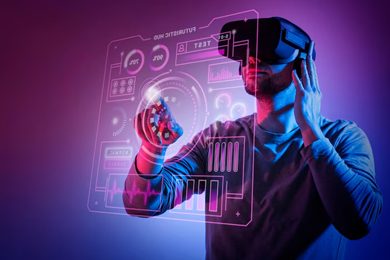



 Tech & IT
Tech & IT
 Business
Business
 Coding & Developer
Coding & Developer
 Finance & Accounting
Finance & Accounting
 Academics
Academics
 Office Applications
Office Applications
 Art & Design
Art & Design
 Marketing
Marketing
 Health & Wellness
Health & Wellness
 Sounds & Music
Sounds & Music
 Lifestyle
Lifestyle
 Photography
Photography
More Learnfly
Business Solution Become an Instructor3D Game Development involves the creation of video games that utilize three-dimensional graphics and environments. This process includes designing and implementing 3D models, textures, animations, and interactions to provide players with immersive and visually engaging gaming experiences.

By : Nour ElAkhdar
Block-based Coding...
4.8 1293
11 lectures All Level

By : Handson Courses
Your First Game with Unity and C#...
4.2 49791
5:47:58 hrs 64 lectures All Level

By : THE MMZ
it is fun to play video games but it is better to make them...
4.3 73304
6 lectures Beginner Level












Learn more topics in various categories at one place. Explore unlimited courses in other categories and up-skill yourself today.

 Jazeb Akram
Jazeb Akram 4.2 771056 Beginner Level

 John Hedengren
John Hedengren 4.1 568974 All Level

 Ranjan Pandey
Ranjan Pandey 4.1 346662 All Level

 Muhammad Ahsan Pervaiz
Muhammad Ahsan Pervaiz 4.2 101264 All Level

 Pieter Vliegenthart
Pieter Vliegenthart 4.6 100852 All Level

 Jerome P.
Jerome P. 4.8 100774 All Level

 Vikas Munjal
Vikas Munjal 4.8 100008 Beginner Level

 Senol Atac
Senol Atac 4.9 99986 All Level

 Avinash A
Avinash A 4.8 99903 All Level

 Ashraf Al Madhoun
Ashraf Al Madhoun14 Lectures Beginner Level

 Satyendra singh
Satyendra singh17 Lectures Beginner Level

 Nour ElAkhdar
Nour ElAkhdar13 Lectures Beginner Level

 Nour ElAkhdar
Nour ElAkhdar11 Lectures Beginner Level

 Ivan Yosifov
Ivan Yosifov6 Lectures Beginner Level

 Sandeep Saini
Sandeep Saini36 Lectures Beginner Level

 Saheb Singh chaddha
Saheb Singh chaddha14 Lectures Beginner Level

 Handson Courses
Handson Courses64 Lectures Beginner Level

 WebCast Channel
WebCast Channel 6 Lectures Beginner Level

 Jed Hastwell
Jed Hastwell44 Lectures Beginner Level

 Hamza Brinis
Hamza Brinis11 Lectures Beginner Level

 THE MMZ
THE MMZ6 Lectures Beginner Level

 Laurence Svekis
Laurence Svekis17 Lectures Beginner Level

 Sandip Bhattacharya
Sandip Bhattacharya19 Lectures Beginner Level

 Sandip Bhattacharya
Sandip Bhattacharya19 Lectures Beginner Level
3D game development involves creating video games that utilize three-dimensional graphics to represent game environments, characters, and objects. It adds depth and realism to the gaming experience compared to traditional 2D game development.
Popular 3D modeling software in game development includes Autodesk Maya, Blender, and 3ds Max. These tools are used to create and design 3D models for characters, environments, and assets within the game.
In 3D game development, graphics are rendered using techniques like rasterization or ray tracing. Rasterization is commonly used for real-time rendering in games, while ray tracing is becoming more prevalent for its ability to simulate realistic lighting and reflections.
Shaders are programs that define how the appearance of 3D objects is rendered. They control aspects such as color, lighting, and texture mapping. Shaders play a crucial role in achieving visual effects and realistic graphics in 3D games.
Physics simulation in 3D game development involves applying real-world physics principles to objects in the game world. It enhances realism by providing accurate interactions like gravity, collisions, and object dynamics, creating a more immersive gaming experience.





